Made pure: the Campana Brothers and Stephan Hamel create Fontana Etruria
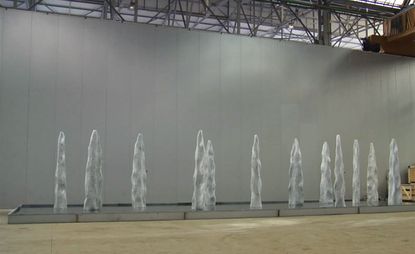
Marble is one of those materials that carries a certain gravitas. Its hefty weight helps, of course, but there is also a long legacy that harks back though time.
One man with a deep passion for the portly material is Stephan Hamel. ‘My grandfather, Cosimo Lorenzoni, was a marble specialist – he was famously behind the black marble memorial created for Mahatma Gandhi in Delhi – and my family comes from [the region of] Pietrasanta, which through the centuries has been home to the highest calibre [of] marble sculpture.’ It was during a visit to the hallowed (sourcing) grounds of Michelangelo that the Campana Brothers and Hamel decided to team up to create a fountain of epic proportions – the Fontana Etruria.
‘To me the Campana Brothers represent this new movement in marble sculpture,’ explains Hamel. Rather than channelling the smooth surfaces of Michelangelo, the Brazilian brothers created a rugged terrain of 12 towering menhirs, or plinths, some over 2m in height.
‘The name of the fountain came from the Etruscans,’ explains Fernando, the younger of the two Campanas. ‘The 12 pillars of the fountain are named after the Etruscans’ 12 cities.’
From each ‘pillar’ water flows freely, powered through a complex hydraulic system, seemingly sculpting its own way down the inverted icicles, themselves made from the finest Carrara marble in precious Cardoso grey.
‘The material is the conductive line here,’ explains Humberto, who speaks passionately about his desire to work as a sculptor, rather than a designer, on this particular occasion. ‘It is a very organic project, with strong connections to nature. I lived in Rome a few years ago and was moved by the countless classic fountains and drinking water sources you can find in each corner of the city,’ he adds when speaking of the cleansing, healing and spiritual powers he associates with water.
Created as a limited edition of five – one for the Campana Brothers, one for Stephan, and three for sale – the hope is that it will become one of those classic fountains Humberto so admired. For now, it remains in Tuscany, near to its source.
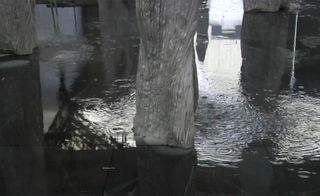
‘To me the Campana Brothers represent this new movement in marble sculpture,’ explains Hamel. The Brazilian brothers created a rugged terrain of 12 towering menhirs, or plinths, some over 2m in height
‘To me the Campana Brothers represent this new movement in marble sculpture,’ explains Hamel. The Brazilian brothers created a rugged terrain of 12 towering menhirs, or plinths, some over 2m in height

From each ‘pillar’ water flows freely, powered through a complex hydraulic system, seemingly sculpting its own way down the inverted icicles
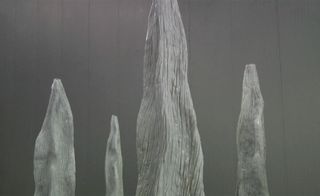
The work's 12 columns in white Carrara marble are steadied by a base covered with rare Cardoso grey marble
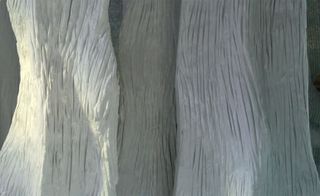
‘The name of the fountain came from the Etruscans,’ explains Fernando Campana. ‘The 12 pillars of the fountain are named after the Etruscans’ 12 cities’
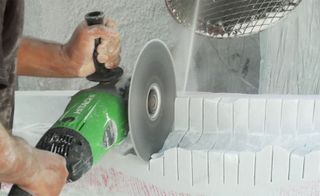
‘The material is the conductive line here,’ explains Humberto, who speaks passionately about his desire to work as a sculptor, rather than a designer, on this particular occasion
INFORMATION
Photography: Emanuele Marzi
Wallpaper* Newsletter
Receive our daily digest of inspiration, escapism and design stories from around the world direct to your inbox
-
 Gucci’s ‘Design Ancora’ reimagines furniture classics in rich red
Gucci’s ‘Design Ancora’ reimagines furniture classics in rich redGucci launches new editions of Italian design icons in an alluring deep red, showcased during Milan Design Week 2024
By Simon Mills Published
-
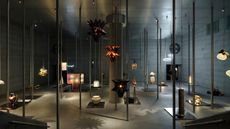 Loewe’s Jonathan Anderson drafts artists to create 24 extraordinary lamps at Milan Design Week 2024
Loewe’s Jonathan Anderson drafts artists to create 24 extraordinary lamps at Milan Design Week 2024Loewe creative director Jonathan Anderson commissioned international artists and artisans to explore ‘illumination within the house’ with a series of lamps and lighting installations, shown at a group exhibition at Milan Design Week 2024
By Scarlett Conlon Published
-
 What are polynucleotides? Trying the skin injectable made from salmon sperm
What are polynucleotides? Trying the skin injectable made from salmon spermPolynucleotides are the latest in skin injectables, containing DNA derived from the gonads of salmon. Wallpaper* Beauty & Grooming Editor Hannah Tindle tries them to discover exactly how they work
By Hannah Tindle Published
-
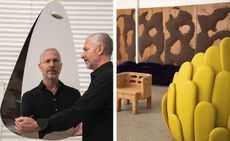 Humberto Campana welcomes us to his new São Paulo studio
Humberto Campana welcomes us to his new São Paulo studioAs one half of Estudio Campana, Humberto Campana built a reputation for elevating found objects into playful furnishings. We visit his new São Paulo studio as he embarks on a solo career
By Beta Germano Published
-
 Estúdio Campana presents ‘Cine São José’ at Friedman Benda LA
Estúdio Campana presents ‘Cine São José’ at Friedman Benda LA‘Cine São José’ by Estudio Campana opens at Friedman Benda LA to coincide with Frieze, featuring rare and significant pieces from the studio's history
By Timothy Anscombe-Bell Published
-
 Machine man: bringing Oskar Schlemmer’s Triadic Ballet into the digital era
Machine man: bringing Oskar Schlemmer’s Triadic Ballet into the digital eraBy Olivia Martin Last updated
-
 Collective concepts: the W* picks from Collective Design Fair 2016
Collective concepts: the W* picks from Collective Design Fair 2016By John Gendall Last updated
-
 Wallpaper* Power 200: the world’s top design names and influencers
Wallpaper* Power 200: the world’s top design names and influencersIt’s back with a double helping of provocation and praise. We have plumped up this year’s Power List to a meaty two-ton’s worth of carefully measured rankings, an upscaled calibration of design achievement. As we strongly suspected, last year’s Power 100 caused a considerable stir and provoked strong words. And, as last month’s editor’s letter made clear, even alarming threats of revenge and recrimination. So this year, unchastened, we thought we would do it all again, but double the dose. To mark our 200th issue, the power 100 has become 200. Or rather 100+100 (normal disservice will be resumed next year). And, in a self-congratulatory nod to our keen eye for talent and perhaps the propulsive effect we have had on nascent design careers, we have trawled the Wallpaper* archives, retraced our expert truffling and recovered the debut appearances of future Power Listers. (Look out for long-lost hair, unlined faces and eyes undimmed).
By Rosa Bertoli Published